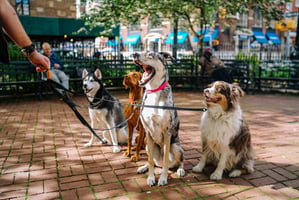Training a Basset Hound requires patience, dedication and consistency. This guide will provide an...
Dorkie Training: A Comprehensive Guide
Training a Dorkie can be a rewarding experience for both the dog and the owner. It requires dedication, patience, and consistency. This guide will provide an overview of the most common and effective methods for training a Dorkie. It will also provide tips for successful Dorkie training and discuss potential challenges that may arise along the way.
Overview of Dorkie Training
Dorkie training is the process of teaching a Dorkie how to behave properly and respond to commands. It involves teaching basic obedience commands such as sit, stay, come, and leave it. It also includes teaching the dog how to respond to environmental cues such as loud noises, other animals, and strangers. Dorkie training can help build a bond between the dog and the owner, as well as provide the dog with the necessary skills to live a safe and happy life.
Dorkie training should begin as early as possible. Puppies are much more receptive to learning than adult dogs and can learn basic commands quickly. Training should also be consistent and should be done in short, frequent sessions. Positive reinforcement is the most effective way to train a Dorkie and should be used whenever possible.
Basic Commands for Dorkie Training
The most important commands for Dorkie training are sit, stay, come, and leave it. These commands will help the dog understand that it needs to obey its owner and can help prevent dangerous situations. It is important to start with basic commands and move on to more advanced commands as the dog progresses.
When teaching the sit command, start by holding a treat in front of the dog’s nose. When the dog sits, reward it with the treat and praise it. When teaching the stay command, start by having the dog sit and then hold your hand up in a “stop” motion. When the dog stays in place, reward it with a treat and praise it. For the come command, start by standing a few feet away from the dog and calling its name. When the dog comes to you, reward it with a treat and praise it.
The leave it command is important for teaching the dog to avoid dangerous items or situations. Start by placing a treat on the ground and telling the dog to “leave it”. If the dog does not obey, gently take its paw and move it away from the treat. Reward the dog with a treat and praise it when it obeys the command.
Tips for Successful Dorkie Training
Successful Dorkie training requires consistency and patience. The following tips can help ensure that the training process is successful:
- Be consistent: Training should be done consistently, in short, frequent sessions. This will help the dog understand what you expect of it.
- Use positive reinforcement: Positive reinforcement is the most effective way to train a Dorkie. Rewards such as treats and praise should be used whenever the dog obeys a command.
- Be patient: Training a Dorkie can take time and patience. Do not become frustrated if the dog does not learn a command quickly.
- Be consistent with commands: It is important to use the same commands and cues for each command. This will help the dog understand what you expect of it.
- Be consistent with rewards: Rewards should be given immediately after the dog obeys a command. This will help reinforce the desired behavior.
Potential Challenges with Dorkie Training
The most common challenge with Dorkie training is an inability to stay focused. Dorkies are active and curious, which can make it difficult to keep their attention. To help with this, it is important to keep training sessions short and interesting. It is also important to keep rewards consistent and to provide ample opportunities for the dog to use the commands.
Another potential challenge is an inability to stay consistent. Training a Dorkie requires consistency and patience. If the owner becomes frustrated or loses interest, it will be much harder for the dog to learn. It is important to remain patient and consistent throughout the training process.
Conclusion
Training a Dorkie can be a rewarding experience for both the dog and the owner. It requires dedication, patience, and consistency. This guide provided an overview of the most common and effective methods for training a Dorkie. It also provided tips for successful Dorkie training and discussed potential challenges that may arise along the way.
By following the tips and advice in this guide, Dorkie owners can be confident that they are providing their dog with the training it needs to live a safe and happy life. With consistency, patience, and positive reinforcement, any Dorkie owner can be successful in their training journey.



